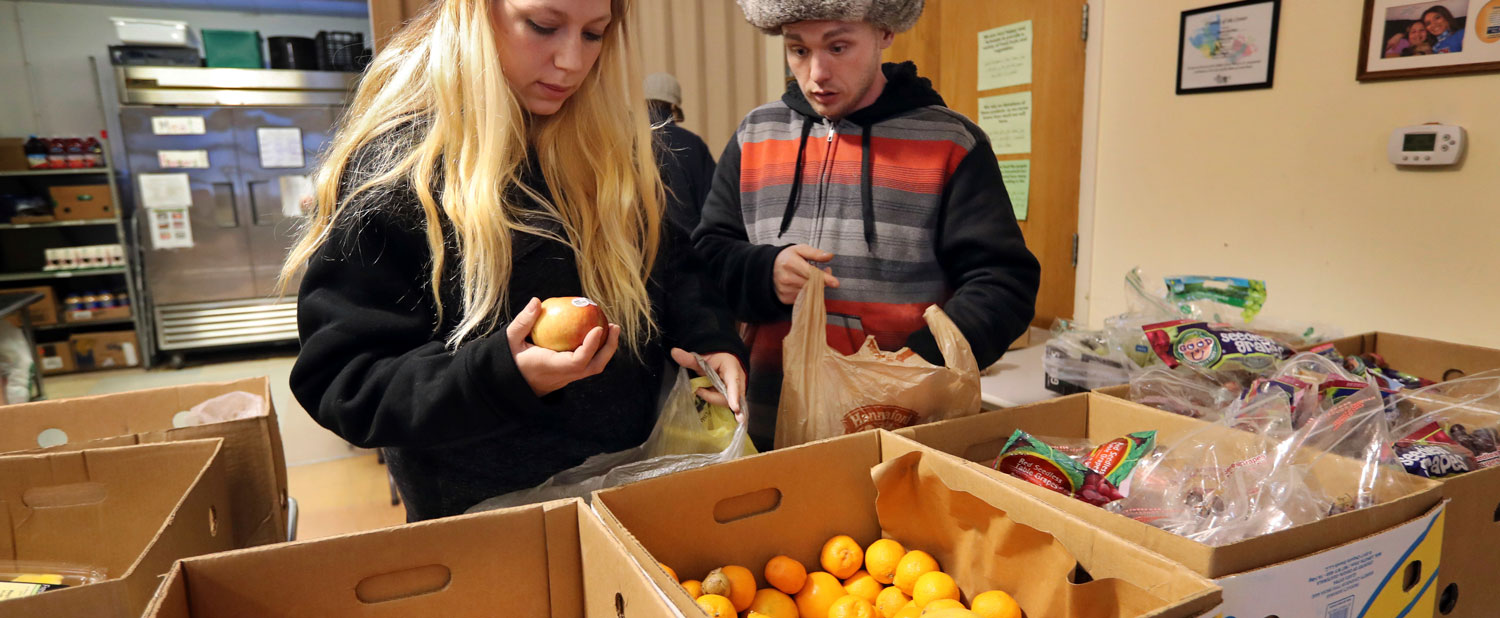
<p>In this Monday, March 27, 2017 photo Sunny Larson, left, and Zak McCutcheon pick produce while gathering provisions to take home at the Augusta Food Bank in Augusta, Maine. Photo by Robert F. Bukaty/AP.</p>
The president’s proposed budget includes massive cuts to the social safety net, raising questions and concerns about what might happen to families in need. Among the cuts includes a decrease of about $191 billion from the Supplemental Nutrition Assistance Program (SNAP, also known as food stamps) over the next 10 years. It requires states to ultimately pay 25 percent of SNAP benefits, which are currently covered by the federal government, and gives states the flexibility to reduce benefit levels.
Requiring states to cover a larger share of safety net programs is a key part of the budget reductions. When the federal share of spending shrinks, state funding must increase if states are to continue meeting the level of need in their state.
Twenty years of experience after welfare reform offers lessons about what can happen under similar circumstances. Welfare reform legislation in 1996 created the Temporary Assistance for Needy Families (TANF) block grant, which gave states fixed funding amounts and the flexibility to determine many of their own rules. While the block grant came with unique challenges, general lessons from the past 20 years of TANF show that when states control benefit levels there can be increased diversity in spending across states - and disparate effects for racial minorities.
One key effect is that today fewer families in poverty receive assistance than before welfare reform. Only 24 families for every 100 families in poverty receive aid, compared with 64 for every 100 families receiving aid in 1996. All but one state serves fewer families in need than they did 20 years ago.
Moreover, because of state flexibility in administering their programs, a family in poverty may have a very different experience with the safety net depending on where they live. Vermont has the highest TANF assistance–to-poverty ratio, serving over 60 out of 100 families in poverty. Louisiana has the lowest rate, serving fewer than 5 out of 100 families in poverty.

And racial minorities have been disproportionately affected by the geographic differences. Fifty-six percent of African Americans live in states with the lowest ratios of TANF assistance to poverty, like Louisiana. Only 46 percent of whites live in those states.
Similarly, when states are given the option to institute other restrictive rules, variation among states also breaks down along racial lines. More African Americans live in states with harsher initial sanctions, more behavioral requirements, shorter time limits, and lower monthly benefits.
When states are required to provide more funding, and are given the option to lower benefit levels, they have an incentive to serve fewer people and exercise more control over those they serve. Lessons from TANF have shown that families in poverty face unequal experiences with the safety net depending on where they live and that these differences are exacerbated for racial and ethnic minorities. The changes in TANF over the past 20 years offer a stark picture of what may happen to families in need if other safety net programs follow in TANF’s steps.
Let’s build a future where everyone, everywhere has the opportunity and power to thrive
Urban is more determined than ever to partner with changemakers to unlock opportunities that give people across the country a fair shot at reaching their fullest potential. Invest in Urban to power this type of work.